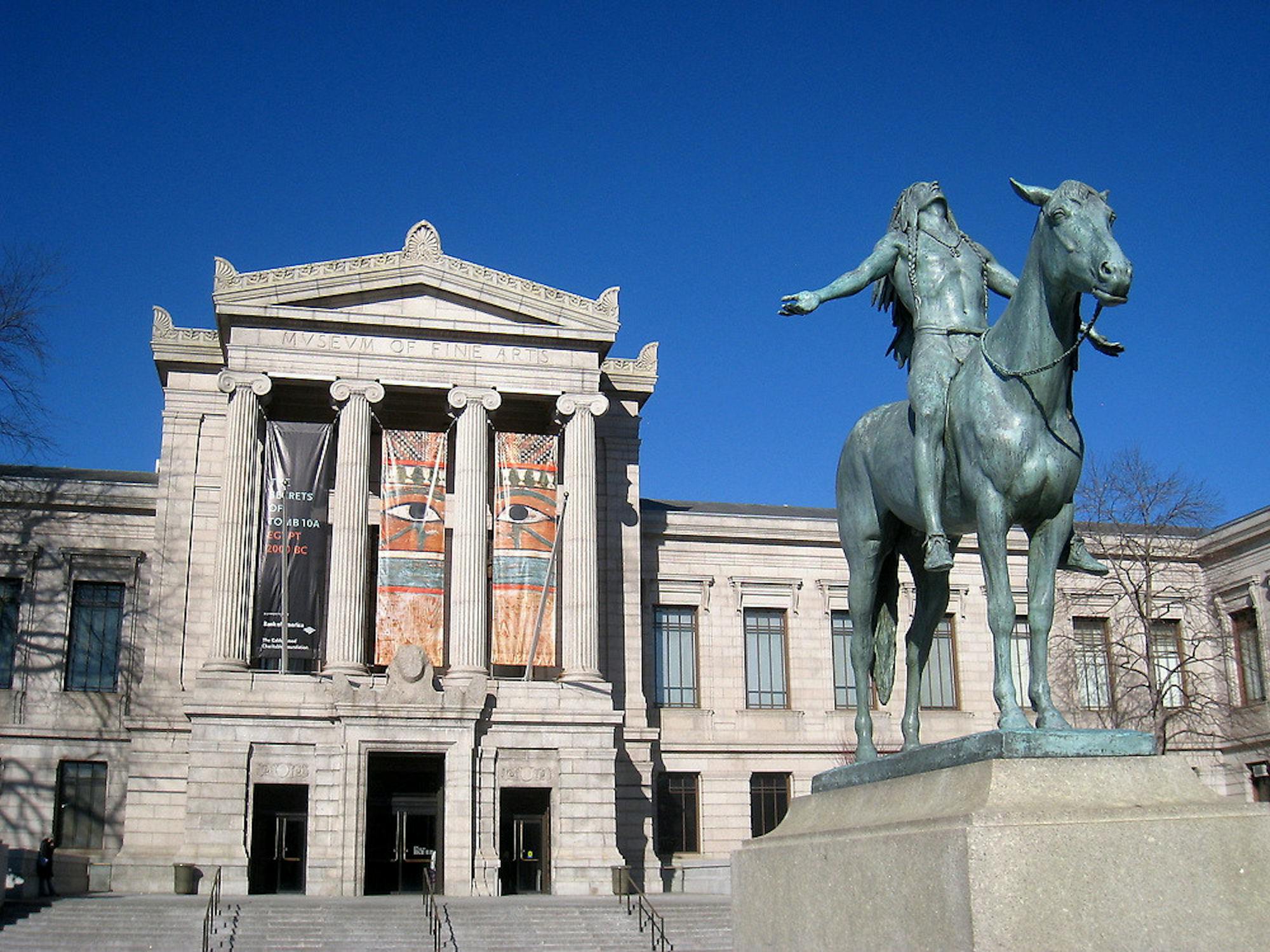The Industrial Revolution brought the world into an era of intrigue. Rapid technological advancements transformed the means of production and transportation, in turn creating diverse — even conflicting — cultural shifts, such as the increasing alienation of workers from their work and community and the unprecedented confluence of people and ideas through the railway and press. Following the Roaring Twenties, the gift of prosperity from the Revolution deteriorated into a curse of depression and war. The quick turns of the twentieth century continue to fascinate scholars and laymen. With its newly opened exhibition, “Viewpoints: Photographs from the Howard Greenberg Collection,” the Museum of Fine Arts surveys the photographic voices of the twentieth century as an artistic study of modernity.
Metropolises constitute the quintessential phenomenon of modernity. Revisiting the epitome of such phenomenon — New York City — “Viewpoints” explores the simultaneous reflections of the city environment as dangerous, cold and alien and as a convenient safe haven for privacy and humanity in the eyes of the 1950s. “Village Idiot” (1950) by Saul Leiter captures the eccentricity and emotional aloofness of the urban machine. The photograph depicts a heavily costumed and masked person in what seems to be New York City at night. This eerie figure is a metaphor for both the City and its human constituents. As the face of the City, the figure characterizes it as a bizarre otherworld, conjuring up the modern literary trope of urban myths. The sense of reality and familiarity of this photo are further blunted by the abstraction of blurred lights and objects in the background, which consequently is contained in a dreamy ambience.
However, the City is not all emotionally gloomy. In his photograph“New Year’s Eve, Times Square, NYC” (1951), Dan Weiner highlights the sentimentality of New York City. In the photograph, a couple kisses in the stereotypically crowded Times Square. Albeit reminiscent of arguably the most famous photo of Times Square kissers — “V-J Day in Times Square” (1945) by Alfred Eisenstaedt — Weiner’s work resembles its precedent in only the most literal sense that they both depict kisses in Times Square. Compared to “V-J Day,” “New Year's Eve” involves much less staging-like quality and therefore feels more intimate, realistic and relatable. First of all, shown in their full bodies, Eisenstaedt’s couple seem literally more removed from the audience than Weiner's, in which only the head and shoulder parts of whom are shown in a closer shot. Besides, “New Year's Eve” assumes a blurrier and less unfocused texture, capturing the heart of New York City at night as it is best known: fast-moving, evanescent and a bit sweaty from the crowd. The moving embrace of Weiner’s couple tells another urban myth: a less uncanny one in which the overall vast, complex and impersonal city community creates private social spaces where people can engage in intimacy without the surveillance of public attention.
Modernity brought structural changes to not only architectural infrastructure but also social values. The “Bearing Witness” section of the exhibition showcases photojournalistic works by some Farm Security Administration photographers, many of whom photographed the African American community. James Karales’ photograph “Selma-to-Montgomery March for Voting Rights in 1965” (1965) documents one of the pivotal movements in African American history, when African American activists fought for their voting rights through civil protests, which successfully led to the passing of the Voting Rights Act (1965) under President Lyndon B. Johnson. “Selma” pictures a procession of African American activists marching in assertive strides under a vast, cloudy sky.The photographer sits at a lower vantage point than the marching caravan, and the resultant awe-inspiring, bottom-up portrait of the activists highlights the virtue and majesty of the cause of the movement. The photo radiates with magnificence. Artistically, this majestic portrait feeds on the legacy of Romanticism in the late eighteenth and early nineteenth centuries. Specifically, the aesthetic of a national flag piercing into a foreboding sky in “Selma” draws almost directly from Romanticism paintings depicting the French and American revolutions, such as “Liberty Leading the People” (Eugène Delacroix, 1830) and “Washington Crossing the Delaware” (Emanuel Leutze, 1851). Through such art historical references, “Selma” documents black history with the same exalting visual language as that used to glorify white history, challenging master narratives on race and the American identity.
Impressively, the curator of “Viewpoints,” Kristen Gresh, has created an eclectic anthology of photographers and subjects. That being said, this photographic collection can still be quite visually and symbolically monotone, as all photos featured are black-and-white, and most tend to assume a certain critical and dreary quality, leading their audience into reveries regarding the faults of last century. However, modernity, at least from an American perspective, for all its Gatsby-esque wasteful luxury, is also creative, entertaining and lively from technological innovations and the novelty of urban life. The jolly of modernity seems underrepresented in “Viewpoints,” as it is in many other retrospective narratives about modernity. In this sense, “Viewpoints” excels in the quality of its content, but does not break boundaries in terms of perspective.
The exhibition will remain on view through Dec. 15. Tufts students get free entry with valid Tufts IDs.
Correction: A previous version of this article incorrectly stated that Howard Greenberg (misspelled as Henry Greenberg) is one of the curators of "Viewpoints." The exhibition is curated by Kristen Gresh, the Estrellita and Yousuf Karsh Senior Curator of Photographs at the Museum of Fine Arts. The article has been updated to reflect this change. The Daily regrets this error.
'Viewpoints': An anthology of photographic poems about modernity

The Museum of Fine Arts, Boston is pictured on Jan 16, 2010.





